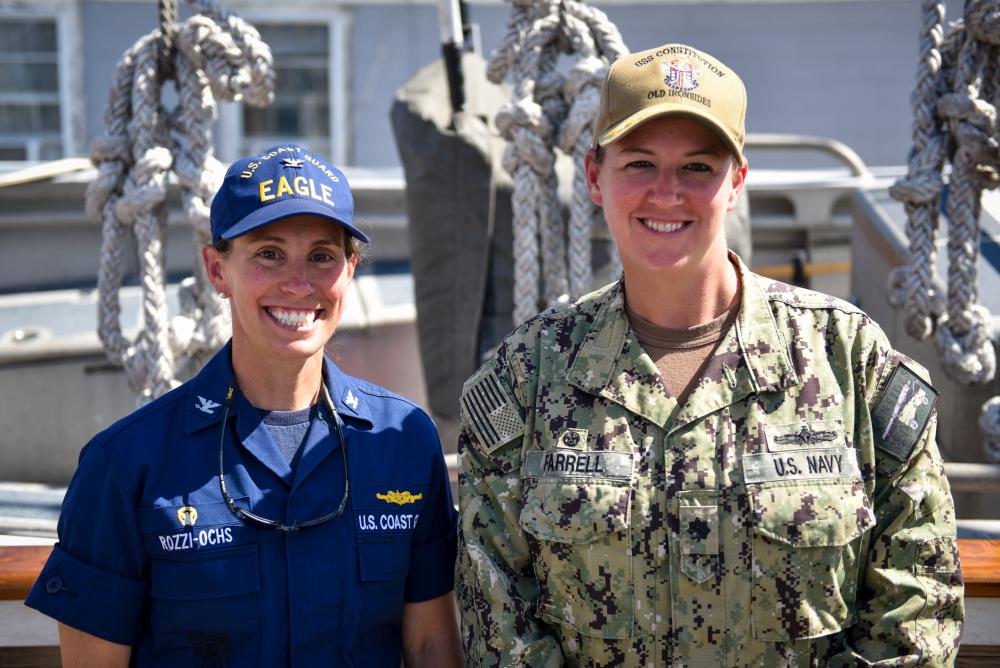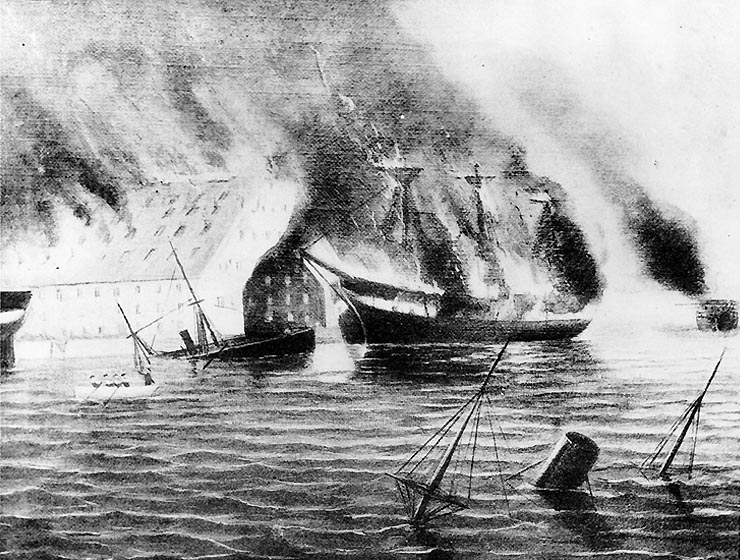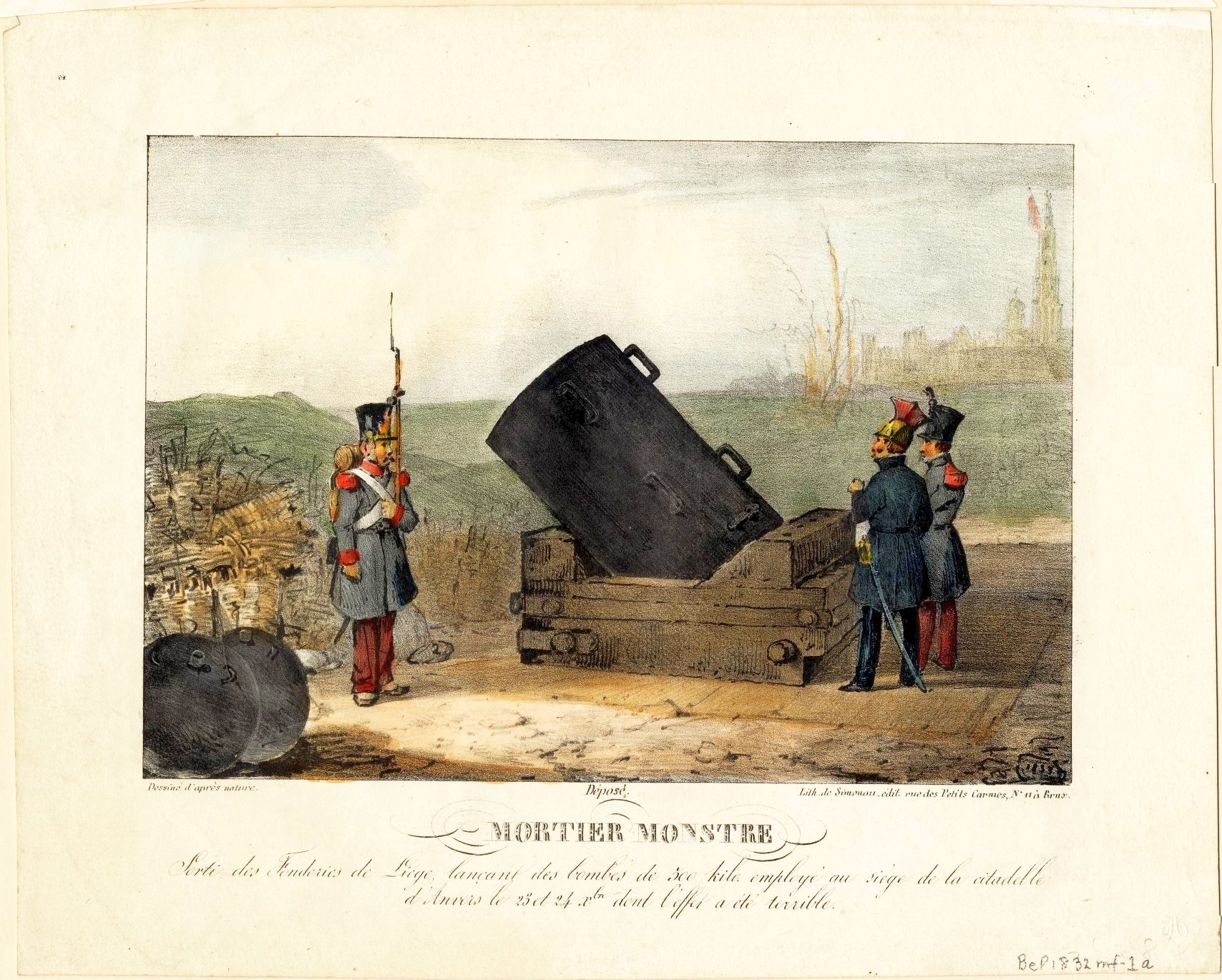|
John Adolphus Dahlgren
John Adolphus Bernard Dahlgren (November 13, 1809 – July 12, 1870) was a United States Navy officer who founded his service's Ordnance Department and launched significant advances in gunnery. Dahlgren devised a smoothbore howitzer, adaptable for many sizes of craft and shore installations. He then introduced a cast-iron muzzle-loading cannon with vastly increased range and accuracy, known as the Dahlgren gun, that became the U.S. Navy's standard armament. In the Civil War, Dahlgren was made commander of the Washington Navy Yard, where he established the Bureau of Ordnance. In 1863, he took command of the South Atlantic Blockading Squadron at the rank of rear admiral. He helped William Tecumseh Sherman secure Savannah, Georgia. Early life and education Dahlgren was born on November 13, 1809, in Philadelphia, Pennsylvania, the son of Bernhard Ulrik Dahlgren, a merchant and Swedish Consul in the city. Career Dahlgren joined the United States Navy in 1826 as a midshipman and w ... [...More Info...] [...Related Items...] OR: [Wikipedia] [Google] [Baidu] |
Philadelphia
Philadelphia, often called Philly, is the largest city in the Commonwealth of Pennsylvania, the sixth-largest city in the U.S., the second-largest city in both the Northeast megalopolis and Mid-Atlantic regions after New York City. Since 1854, the city has been coextensive with Philadelphia County, the most populous county in Pennsylvania and the urban core of the Delaware Valley, the nation's seventh-largest and one of world's largest metropolitan regions, with 6.245 million residents . The city's population at the 2020 census was 1,603,797, and over 56 million people live within of Philadelphia. Philadelphia was founded in 1682 by William Penn, an English Quaker. The city served as capital of the Pennsylvania Colony during the British colonial era and went on to play a historic and vital role as the central meeting place for the nation's founding fathers whose plans and actions in Philadelphia ultimately inspired the American Revolution and the nation's inde ... [...More Info...] [...Related Items...] OR: [Wikipedia] [Google] [Baidu] |
Midshipman
A midshipman is an officer of the lowest rank, in the Royal Navy, United States Navy, and many Commonwealth navies. Commonwealth countries which use the rank include Canada (Naval Cadet), Australia, Bangladesh, Namibia, New Zealand, South Africa, India, Pakistan, Singapore, Sri Lanka, and Kenya. In the 17th century, a midshipman was a rating for an experienced seaman, and the word derives from the area aboard a ship, amidships, either where he worked on the ship, or where he was berthed. Beginning in the 18th century, a commissioned officer candidate was rated as a midshipman, and the seaman rating began to slowly die out. By the Napoleonic era (1793–1815), a midshipman was an apprentice officer who had previously served at least three years as a volunteer, officer's servant or able seaman, and was roughly equivalent to a present-day petty officer in rank and responsibilities. After serving at least three years as a midshipman or master's mate, he was eligible to take the e ... [...More Info...] [...Related Items...] OR: [Wikipedia] [Google] [Baidu] |
Captain (USN)
In the United States Navy, United States Coast Guard, United States Public Health Service Commissioned Corps (USPHS), and NOAA Commissioned Officer Corps, National Oceanic and Atmospheric Administration Commissioned Officer Corps (NOAA Corps), captain is the senior-most commissioned officer rank below that of flag officer (i.e., admirals). The equivalent rank is Colonel (United States), colonel in the United States Army, United States Air Force, Air Force, United States Space Force, Space Force, and United States Marine Corps, Marine Corps. Reflecting its nautical heritage, the term ''captain (naval), captain'' is used as a Captain (naval)#Etiquette, military title by more junior officers who Commanding officer, command a commissioned vessel of the Navy, Coast Guard, or National Oceanic and Atmospheric Administration (NOAA) ship of patrol boat size or greater. Officers below O-6 who command aviation squadrons (typically O-5 Commander (United States), commanders) usually use the ... [...More Info...] [...Related Items...] OR: [Wikipedia] [Google] [Baidu] |
Commander (United States)
In the United States, commander is a military rank that is also sometimes used as a military billet title—the designation of someone who manages living quarters or a base—depending on the branch of service. It is also used as a rank or title in non-military organizations; particularly in law enforcement. As rank History The commander rank started out as "Master and Commander" in 1674 within the Royal Navy for the officer responsible for sailing a ship under the Captain and sometimes second-in-command. Sub-captain, under-captain, rector and master-commanding were also used for the same position. With the Master and Commander also serving as captain of smaller ships the Royal Navy subsumed as the third and lowest of three grades of captain given the various sizes of ships. The Continental Navy had the tri-graded captain ranks. Captain 2nd Grade, or Master Commandant, became Commander in 1838. Naval In the Navy, the Coast Guard, the NOAA Corps, and the Public Health Se ... [...More Info...] [...Related Items...] OR: [Wikipedia] [Google] [Baidu] |
Admiral John Dahlgren - NARA - 528718 Edit
Admiral is one of the highest ranks in some navies. In the Commonwealth nations and the United States, a "full" admiral is equivalent to a "full" general in the army or the air force, and is above vice admiral and below admiral of the fleet, or fleet admiral. Etymology The word in Middle English comes from Anglo-French , "commander", from Medieval Latin , . These evolved from the Arabic () – (), “king, prince, chief, leader, nobleman, lord, a governor, commander, or person who rules over a number of people,” and (), the Arabic article answering to “the.” In Arabic, admiral is also represented as (), where () means the sea. The 1818 edition of Samuel Johnson's ''A Dictionary of the English Language'', edited and revised by the Rev. Henry John Todd, states that the term “has been traced to the Arab. emir or amir, lord or commander, and the Gr. , the sea, q. d. ''prince of the sea''. The word is written both with and without the d, in other languages, as wel ... [...More Info...] [...Related Items...] OR: [Wikipedia] [Google] [Baidu] |
Frigate
A frigate () is a type of warship. In different eras, the roles and capabilities of ships classified as frigates have varied somewhat. The name frigate in the 17th to early 18th centuries was given to any full-rigged ship built for speed and maneuverability, intended to be used in scouting, escort and patrol roles. The term was applied loosely to ships varying greatly in design. In the second quarter of the 18th century, the 'true frigate' was developed in France. This type of vessel was characterised by possessing only one armed deck, with an unarmed deck below it used for berthing the crew. Late in the 19th century (British and French prototypes were constructed in 1858), armoured frigates were developed as powerful ironclad warships, the term frigate was used because of their single gun deck. Later developments in ironclad ships rendered the frigate designation obsolete and the term fell out of favour. During the Second World War the name 'frigate' was reintroduced to des ... [...More Info...] [...Related Items...] OR: [Wikipedia] [Google] [Baidu] |
USS Merrimack (1855)
USS ''Merrimack'', also improperly ''Merrimac'', was a steam frigate, best known as the hull upon which the ironclad warship CSS ''Virginia'' was constructed during the American Civil War. The CSS ''Virginia'' then took part in the Battle of Hampton Roads (also known as "the Battle of the ''Monitor'' and the ''Merrimack''") in the first engagement between ironclad warships. ''Merrimack'' was the first of six screw frigates (steam frigates powered by screw propellers) begun in 1854. Like others of her class (, , , and ), she was named after a river. The Merrimack originates in New Hampshire and flows through the town of Merrimac, Massachusetts, often considered an older spelling which has sometimes caused confusion of the name.Nelson, J. The Reign of Iron. 2004. History Creation ''Merrimack'' was launched by the Boston Navy Yard 15 June 1855, sponsored by Mary E. Simmons, and commissioned 20 February 1856, Captain Garrett J. Pendergrast in command. She was the se ... [...More Info...] [...Related Items...] OR: [Wikipedia] [Google] [Baidu] |
Henri-Joseph Paixhans
Henri-Joseph Paixhans (; January 22, 1783, Metz – August 22, 1854, Jouy-aux-Arches) was a French artillery officer of the beginning of the 19th century. Henri-Joseph Paixhans graduated from the École Polytechnique. He fought in the Napoleonic Wars, was the representative ( Député) for the Moselle department between 1830 and 1848, and became "General de Division" in 1848. In 1823, he invented the first shell guns, which came to be called Paixhans guns (or "canon-obusiers" in the French Navy). Paixhans guns became the first naval guns to combine explosive shells and a flat trajectory, thereby triggering the demise of wooden ships, and the iron hull revolution in shipbuilding. Paixhans also invented a "Mortier monstre" ("Monster Mortar"), using 500 kg bombs, which was used to terrible effect in the Siege of Antwerp in 1832. He was also a naval theorist claiming that a few aggressively armed small units could destroy the largest naval units of the time, making him a prec ... [...More Info...] [...Related Items...] OR: [Wikipedia] [Google] [Baidu] |
Robert Stockton
Robert Field Stockton (August 20, 1795 – October 7, 1866) was a United States Navy commodore, notable in the capture of California during the Mexican–American War. He was a naval innovator and an early advocate for a propeller-driven, steam-powered navy. Stockton was from a notable political family and also served as a U.S. senator from New Jersey. Biography Robert F. Stockton was born at Morven, Stockton Street, Princeton, New Jersey, into a political family; his father Richard Stockton was a U.S. senator and representative, and his grandfather, Judge Richard Stockton was attorney general for New Jersey and a signer of the Declaration of Independence. Robert F. Stockton was of English descent, and his family had been in what is now the United States since the early colonial period. Early naval service Stockton was appointed a midshipman in the U.S. Navy in September 1811, shortly after his 16th birthday, and served at sea and ashore during the War of 1812. After tha ... [...More Info...] [...Related Items...] OR: [Wikipedia] [Google] [Baidu] |
John Ericsson
John Ericsson (born Johan Ericsson; July 31, 1803 – March 8, 1889) was a Swedish-American inventor. He was active in England and the United States. Ericsson collaborated on the design of the railroad steam locomotive ''Novelty'', which competed in the Rainhill Trials on the Liverpool and Manchester Railway, which were won by inventor George Stephenson's (1781-1848), ''Rocket''. In North America, he designed the United States Navy's first screw-propelled steam-frigate , in partnership with Captain (later Commodore) Robert F. Stockton (1795-1866), who unjustly blamed him for a fatal accident. A new partnership with Cornelius H. DeLamater (1821-1889), of the DeLamater Iron Works in New York City resulted in the first armoured ironclad warship equipped with a rotating gun turret, , which dramatically saved the U.S. (Union Navy) naval blockading squadron from destruction by an ironclad Confederate States naval vessel, , at the famous Battle of Hampton Roads at the southern m ... [...More Info...] [...Related Items...] OR: [Wikipedia] [Google] [Baidu] |
Muzzle Loading
A muzzleloader is any firearm into which the projectile and the propellant charge is loaded from the muzzle of the gun (i.e., from the forward, open end of the gun's barrel). This is distinct from the modern (higher tech and harder to make) designs of breech-loading firearms. The term "muzzleloader" applies to both rifled and smoothbore type muzzleloaders, and may also refer to the marksman who specializes in the shooting of such firearms. The firing methods, paraphernalia and mechanism further divide both categories as do caliber (from cannons to small-caliber palm guns). Modern muzzleloading firearms range from reproductions of sidelock, flintlock and percussion long guns, to in-line rifles that use modern inventions such as a closed breech, sealed primer and fast rifling to allow for considerable accuracy at long ranges. Modern mortars use a shell with the propelling charge and primer attached at the base. Unlike older muzzleloading mortars, which were loaded the same wa ... [...More Info...] [...Related Items...] OR: [Wikipedia] [Google] [Baidu] |
Dahlgren Pawnee H63362t
Dahlgren may refer to: Places * Dahlgren, Illinois * Dahlgren, Virginia ** Naval Surface Warfare Center Dahlgren Division * Dahlgren Township, Carver County, Minnesota * Dahlgren Township, Hamilton County, Illinois * Dahlgrens Corner, Virginia * Dahlgren Chapel (Maryland) * Dahlgren Chapel of the Sacred Heart, at Georgetown University * Dahlgren Hall at the U.S. Naval Academy in Annapolis, Maryland *Dahlgren Railroad Heritage Trail in King George County, Virginia * Lake Dahlgren, small lake situated southeast of Noble, Oklahoma *Dahlgren River, river of Minnesota Other uses *Dahlgren (surname), a Swedish surname * Dahlgren gun, type of smooth bore cannon designed by the Admiral and used by the U.S. Navy * Dahlgren Affair, failed mission to assassinate leaders of the Confederacy * Dahlgren system and dahlgrenogram, created by Swedish-Danish botanist Rolf M. T. Dahlgren (1932–1987) *, Torpedo Boat No. 9/TB-9/Coast Torpedo Boat No. 4 * 6945 Dahlgren (1980 FZ3), Main-belt As ... [...More Info...] [...Related Items...] OR: [Wikipedia] [Google] [Baidu] |







